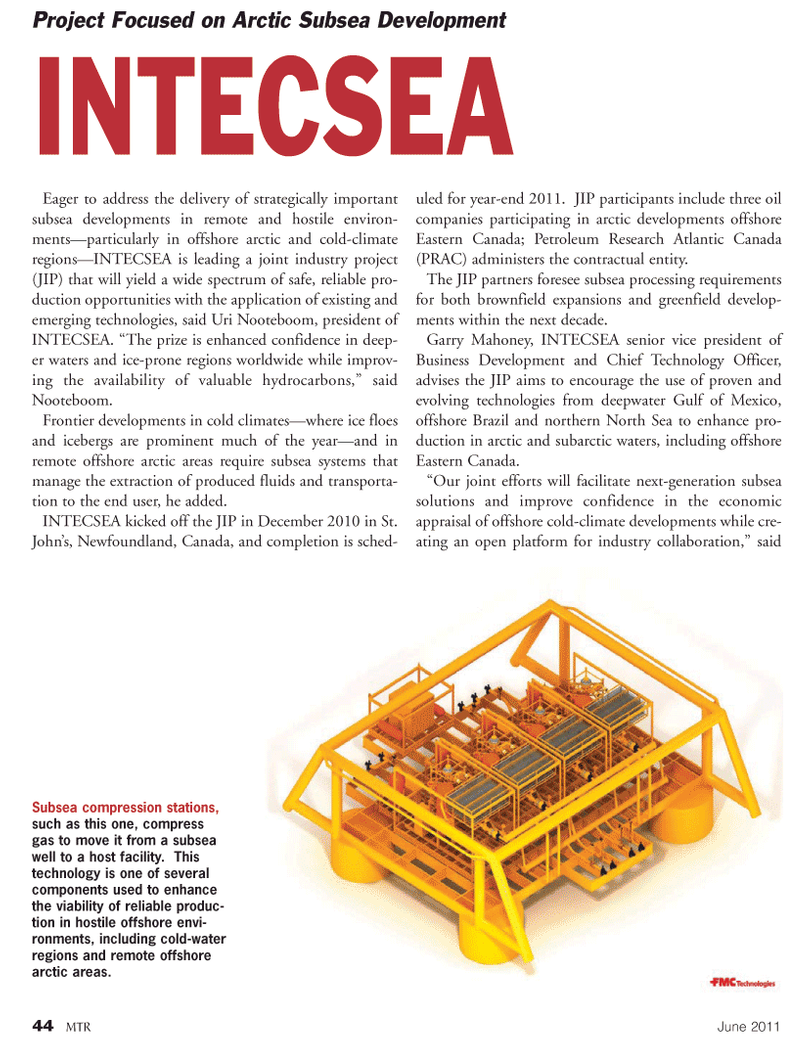
Page 44: of Marine Technology Magazine (June 2011)
Hydrographic Survey
Read this page in Pdf, Flash or Html5 edition of June 2011 Marine Technology Magazine
Eager to address the delivery of strategically important subsea developments in remote and hostile environ- ments—particularly in offshore arctic and cold-climate regions—INTECSEA is leading a joint industry project (JIP) that will yield a wide spectrum of safe, reliable pro- duction opportunities with the application of existing and emerging technologies, said Uri Nooteboom, president of
INTECSEA. “The prize is enhanced confidence in deep- er waters and ice-prone regions worldwide while improv- ing the availability of valuable hydrocarbons,” said
Nooteboom.
Frontier developments in cold climates—where ice floes and icebergs are prominent much of the year—and in remote offshore arctic areas require subsea systems that manage the extraction of produced fluids and transporta- tion to the end user, he added.
INTECSEA kicked off the JIP in December 2010 in St.
John’s, Newfoundland, Canada, and completion is sched- uled for year-end 2011. JIP participants include three oil companies participating in arctic developments offshore
Eastern Canada; Petroleum Research Atlantic Canada (PRAC) administers the contractual entity.
The JIP partners foresee subsea processing requirements for both brownfield expansions and greenfield develop- ments within the next decade.
Garry Mahoney, INTECSEA senior vice president of
Business Development and Chief Technology Officer, advises the JIP aims to encourage the use of proven and evolving technologies from deepwater Gulf of Mexico, offshore Brazil and northern North Sea to enhance pro- duction in arctic and subarctic waters, including offshore
Eastern Canada. “Our joint efforts will facilitate next-generation subsea solutions and improve confidence in the economic appraisal of offshore cold-climate developments while cre- ating an open platform for industry collaboration,” said 44 MTR June 2011
Project Focused on Arctic Subsea Development
INTECSEA
Subsea compression stations, such as this one, compress gas to move it from a subsea well to a host facility. This technology is one of several components used to enhance the viability of reliable produc- tion in hostile offshore envi- ronments, including cold-water regions and remote offshore arctic areas.

 43
43

 45
45
